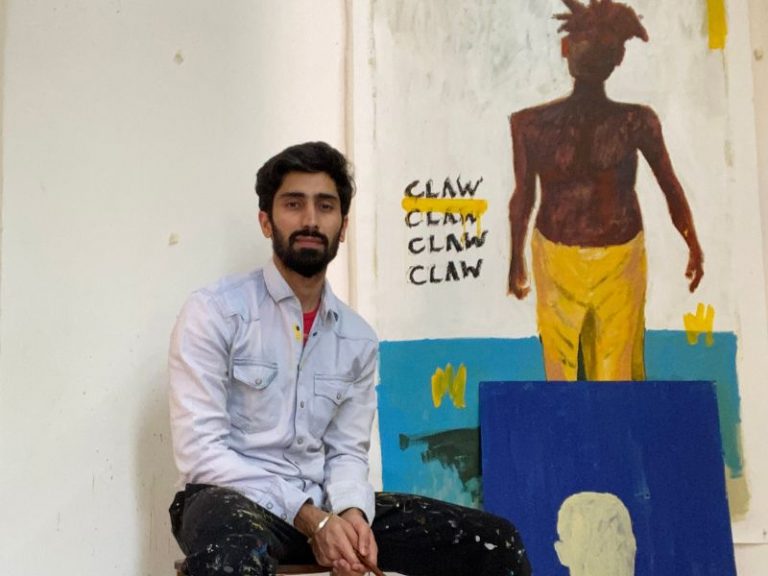Interview: Harsimran Juneja, director, The Uno Lona Academy
-Dipta Joshi
Co-founded by the mother-son artists duo, Harsimran Juneja and Shalu Juneja, Ahmedabad-based art and design academy, The Uno Lona Academy (estb. 2016) has been recognised for its quality interdisciplinary education that inculcates an empathetic and divergent approach amongst students. Harsimran Juneja, director, The Uno Lona Academy talks to EducationWorld’s Dipta Joshi about the impact of technology on careers related to art and design.
What is your view about art education in Ahmedabad-one of India’s culturally rich cities?
Art education is fairly underdeveloped in Ahmedabad, especially when compared to design education. And a huge reason for this, in my opinion, is the lack of a robust arts ecosystem in the city. There are only a handful of institutions, galleries and museums that focus on art.
Colleges to a great extent have been unable to upgrade themselves in art education as rapidly as design colleges have and schools have struggled to maintain an art department because of high expenses and lack of trained faculty members.
What has been The Uno Lona Academy’s response to the situation?
At Uno Lona, we are attempting to be futuristic with education in art and design and focusing on developing 21st century skills along with skills in just art and design. However, this can be extremely challenging in an education system that has been heavily reliant on a top-down approach of teaching and learning as opposed to a student-centered learning. However, we are hopeful that the change will arrive gradually.
There has been a growing interest in design thinking as a concept. Your comment.
Design Thinking is a concept that equips you with tools for problem-solving regardless of the area, domain or profession that requires problem-solving. At Uno Lona, we used design thinking in two ways – in developing the education model and in our teaching methodology in the classroom. We applied it as a concept in developing a student’s individual creative process.
Our teaching methodology is also adapted from the process of design thinking. While working with students on one-on-one projects, we start with defining the task at hand, researching, iterative prototyping and then execution. Throughout this journey, we educators are merely mentors and facilitators, guiding them towards an effective outcome.
How does art impact interpersonal competencies?
If we go by the years of research conducted by professor Elliot Eisner, a visionary in the field of art and education, art is capable of building qualitative judgement, critical thinking, problem solving, empathy, multiple perspectives and more. Similarly, the design process also requires you to challenge your assumptions, see things through various perspectives and empathise with your target audience.
Tell us about the courses offered at your academy?
Uno Lona has simplified its course offerings to two categories – career exploration and career building. Our career exploration program for 6th – 10th graders is called foundation in art and design (FAD) and it focuses on skill building, materials exploration, creative experimentation and subject exploration.
The career building program for 11th-12th graders is called art and design portfolio building (ADP) and focuses specifically in mentoring students who wish to pursue higher education in art or design in universities abroad. It holistically develops a child in creativity, imagination, communication, presentation, critical thinking and problem solving.
How has tech impacted careers in art and design?
The crossover between tech and design has created an entirely new field of study referred to as creative computing. The University of the Arts, London has notably developed creative computing as a college within its ecosystem. Studying in any field of art and design, you develop skill sets that are transferable to other creative disciplines. For instance, an architect can design furniture. This offers students several opportunities in career building without restricting themselves to their chosen path of studies.
Additionally, newer courses such as service design, experience design, sustainable design, design management etc. are creating new opportunities in the non-technical area of design. For instance, an experience designer at IKEA is highly crucial in ensuring a holistic experience for every customer walking into their mammoth stores across the world. The list is endless and yet growing with newer developments.
Tell us about your plans to reach out to students beyond Ahmedabad.
We researched and explored different education models, theories of education, approaches to education and narrowed down our objectives to creating an education system that prepares children to get into and navigate through the years in college. We have developed a new operational model to deliver education that helps us achieve our objective and yet maintains the flexibility that is dear to us and our students. In June 2021, we ran a six month pilot that gave us our proof-of-concept, enabling us to now scale up our operations to Mumbai. We are still working out the details and are likely to begin operations post Diwali.
Also Read: The Importance of Art Education in Schools
















Add comment